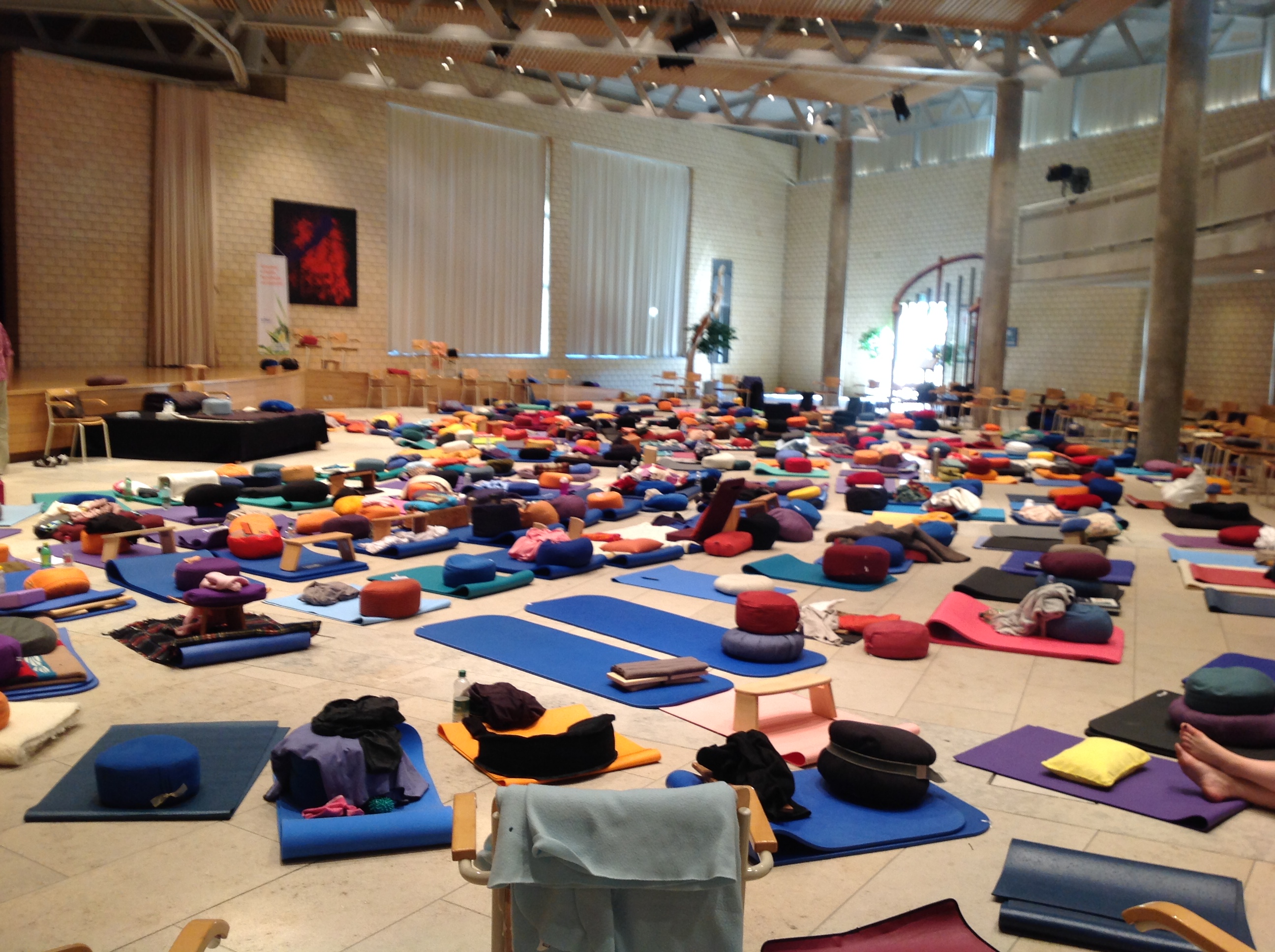Principles and Standards for CFM trained MBSR Teachers
Certain principles are important for effective teaching of the MBSR curriculum and for adhering to its professional standards of practice. A non-exclusive list of essential elements of training programs to develop MBSR teachers would include:
- The teacher of MBSR teachers him or herself needs to have a longstanding grounding in meditative practices and be a committed student of the dharma, as it is expressed both within the Buddhist meditation traditions and in more mainstream and universal contexts exemplified by MBSR. This has nothing to do with being or not being a Buddhist.
- MBSR is a vehicle for embodying and transmitting the dharma in a wholly secular and universal idiom. It is a recontextualizing of dharma, not a decontextualizing of it.
- MBSR instructors need to have their own personal meditation practice and attend retreats in the spirit of “continuing education” and the on going deepening of their practice and understanding.
- MBSR instructors follow the principle that we never ask more of program participants than we do of ourselves on a daily basis in terms of both formal and informal mindfulness practices. This needs to be the case for teachers of MBSR teachers as well.
- The teaching of mindfulness is never a matter of merely teaching or operationalizing techniques. Mindfulness is a way of being in a wiser relationship to one’s experience, not one particular mental state to be pursued and attained. Thus, the non-instrumental dimensionality of the work and of the practice of mindfulness is the foundation of effective practice and teaching.
- Teaching MBSR is an opportunity for right livelihood. Thus, it is important to develop fair and non-exploitative pricing structure for both MBSR and for the training of teachers of MBSR.
Standards of Practice for Trainers of MBSR Instructors
These Standards of Practice reflect three decades of professional education and training at the Center for Mindfulness in Medicine, Health Care and Society at the University of Massachusetts Medical School. They are not sacrosanct and do not represent an invariant path to becoming an MBSR teacher. Other well-established MBSR training programs and institutes exist around the world. Wherever possible, the expressed intention of the Center for Mindfulness is to align with MBSR professionals conducting these training programs in order to establish program equivalency and reciprocity when possible. We look forward to collaborating with colleagues around the world in the development of a well-informed international body of professionals capable of establishing broadly agreed-upon principles and standards of practice for both teachers of MBSR and for those teaching others to teach MBSR. Until such an organization is established and standards agreed upon, we have elected to use the current Center for Mindfulness/Oasis Institute education and training model as a well-established criteria for Standards of Practice for MBSR teacher training programs.
The standards enumerated below set a high bar – one we consider to be reasonable and appropriate for the magnitude and potential depth of this work. They are the minimal standards to which we hold ourselves. Not all health professionals or educators will be able to meet these standards when they begin to undertake teaching MBSR to patients/clients/participants. They can be “grown into” over time, according to each individual’s background, training, motivation, and life circumstances. However, in our view, they serve as an appropriate benchmark for individuals who are involved in the training of professionals to teach MBSR.
- Participation in and completion of the 8-week or 9-day Practicum in Mindfulness-Based Stress Reduction, taught by CFM teacher trainers (or their equivalent as recognized by the CFM).
- Participation in and completion of the 8-day Teacher Development Intensive, taught by CFM teacher trainers.
- Full teaching responsibility for a minimum of fifteen 8-week MBSR program cycles over a minimum of three years.
- Engagement in Supervision in MBSR (one or two 8-week cycles) with a certified CFM teacher trainer (or a CFM recognized MBSR supervisor/mentor).
- Participation in and completion of the MBSR in Mind-Body Medicine: A 7 Day Residential Training/Retreat taught by Center for Mindfulness (CFM) teacher trainers.
- Teacher Certification in MBSR granted by the CFM (teacher certification process complete or in process), or partnering organizations.
- On-going participation in the MBSR Teacher Trainer Consultation program provided by a certified CFM teacher trainer), or equivalent.
- Regular attendance at teacher-led silent meditation retreats of at least 5 to 7 days in duration, with two being of seven (7) days duration or more. We strongly recommend that all aspiring and engaged MBSR teachers and teacher trainers attend retreats in the Western Vipassana tradition, because this tradition closely reflects and serves as a foundation for the spirit, practice and attitudes of MBSR. We also recognize that wisdom is expressed and reflected in a range of meditation traditions and consciousness disciplines, and that retreats in other traditions may serve in profound and important ways to expand, enrich, supplement, and strengthen this basic foundation.
- A sustained and on-going personal mindfulness practice that includes sitting meditation and mindful Hatha yoga reinforced by on-going study with teachers.
- Well-developed learner-centered teaching skills in working with classes and with groups; a capacity for deep listening, regard, and compassion for all participants; languaging sensibilities in relationship to guiding meditative practices and navigating class dynamics, skill in large and small group dialogue and the process of inquiring together; and skill in creating and maintaining a safe container for learning and exploration in the face of stress, pain, illness, and suffering.

